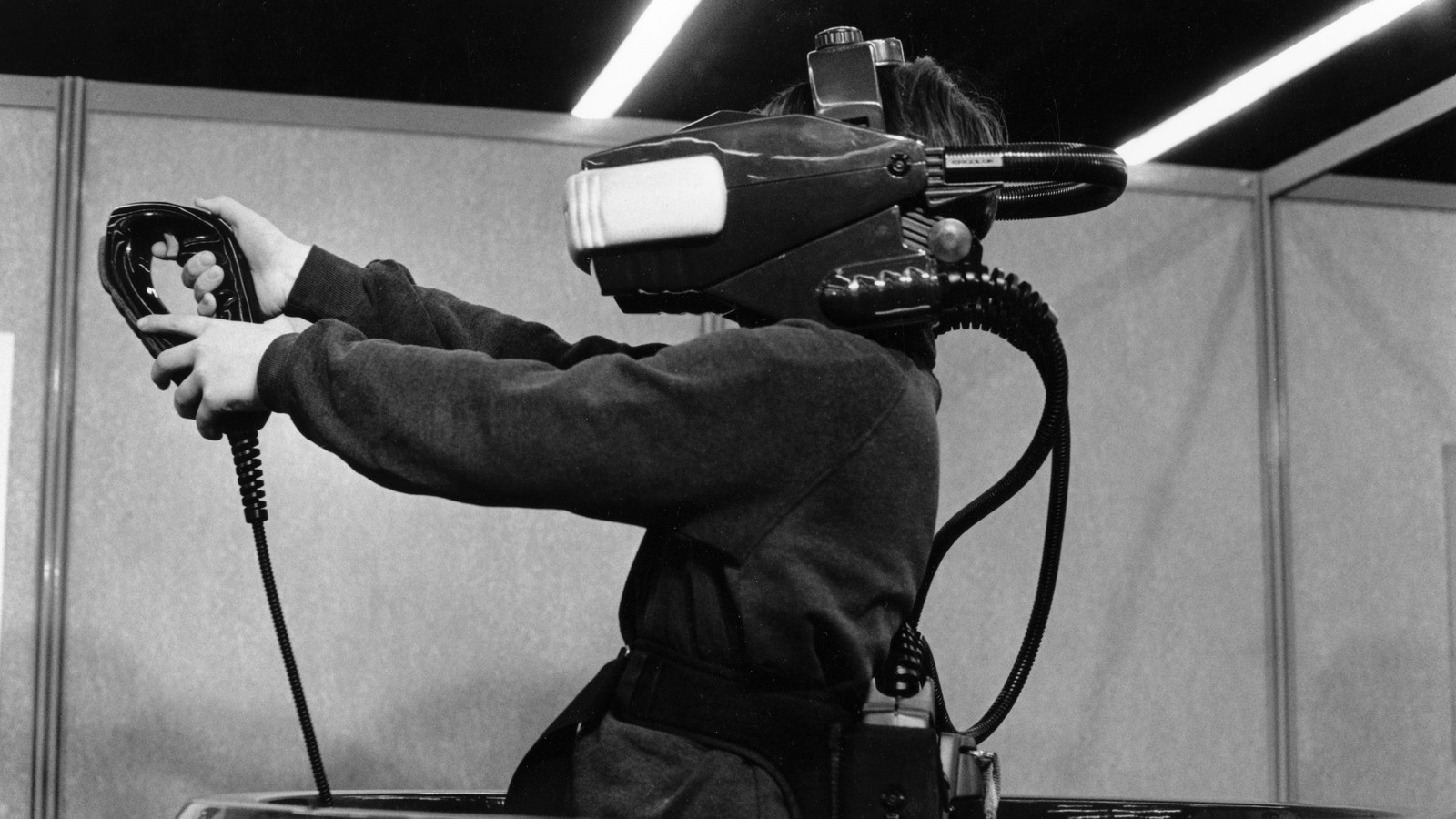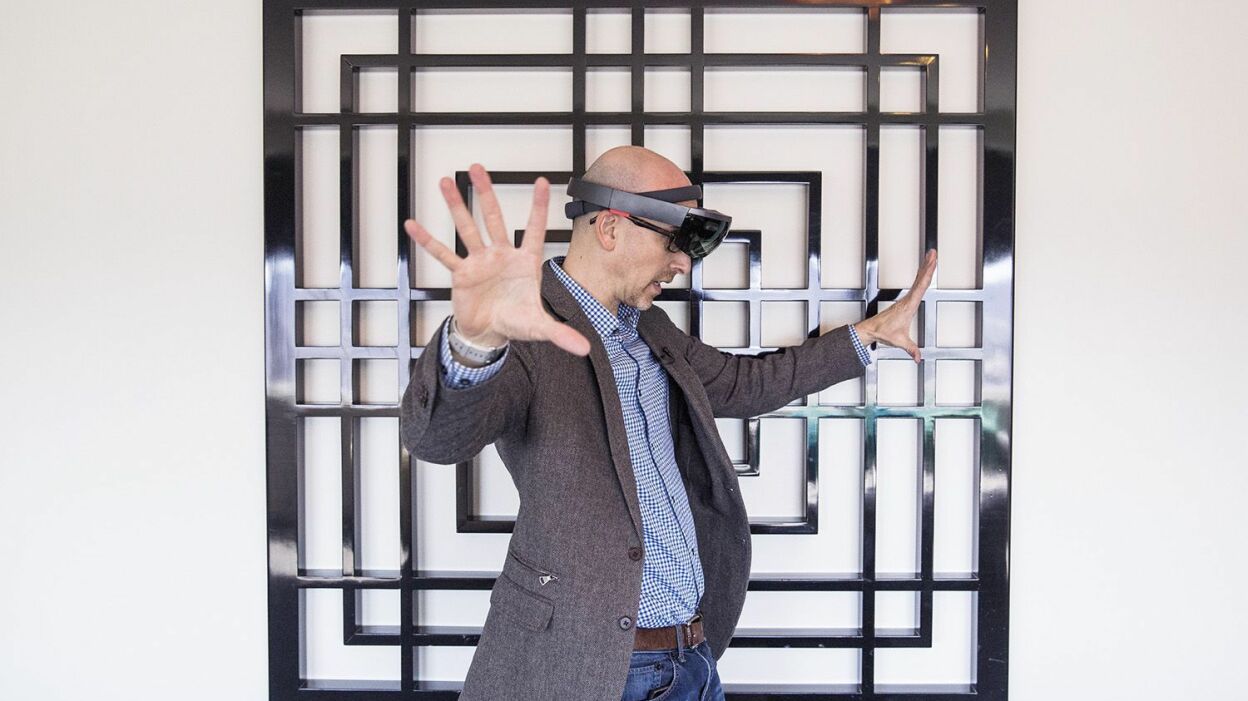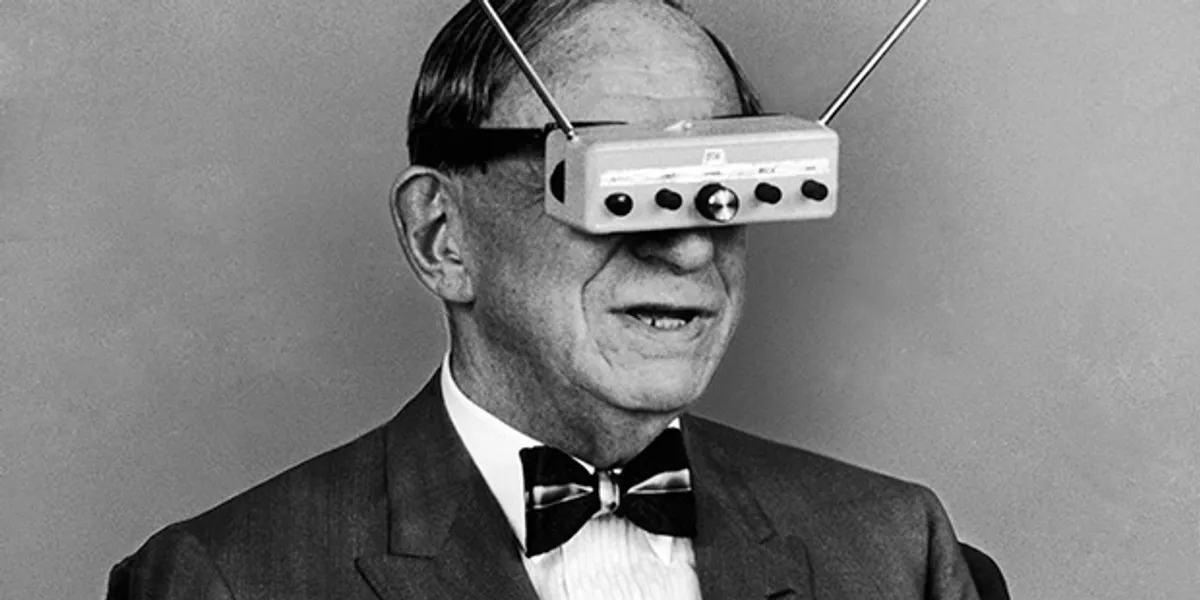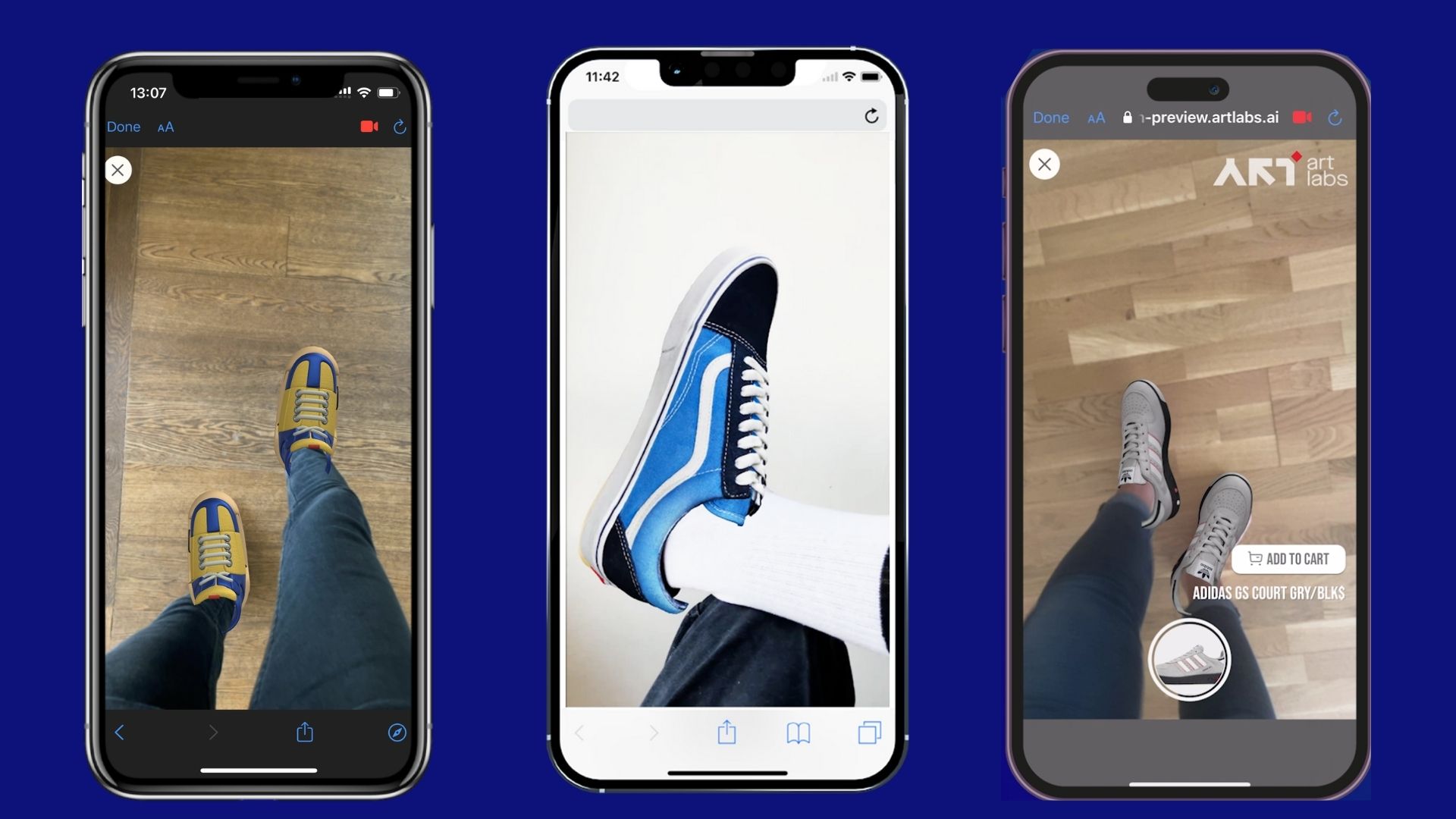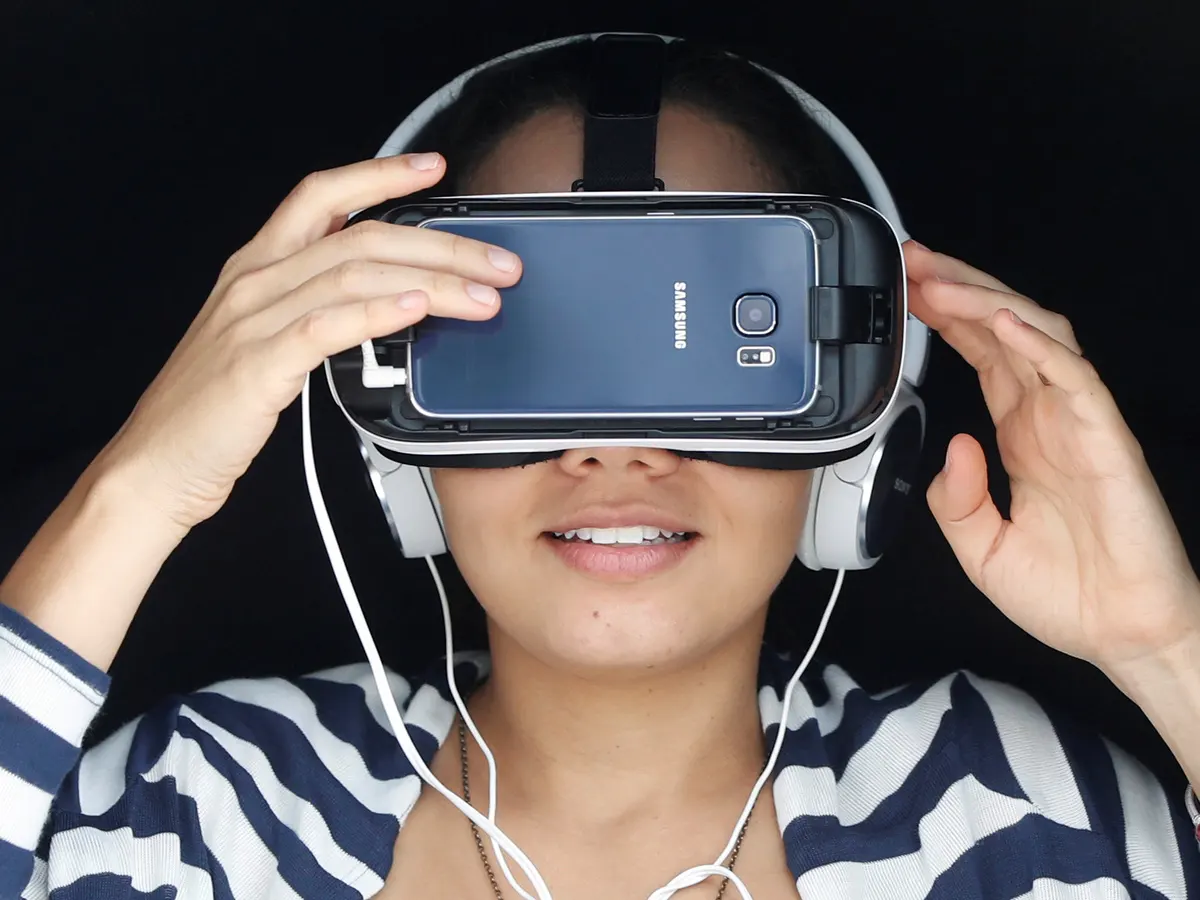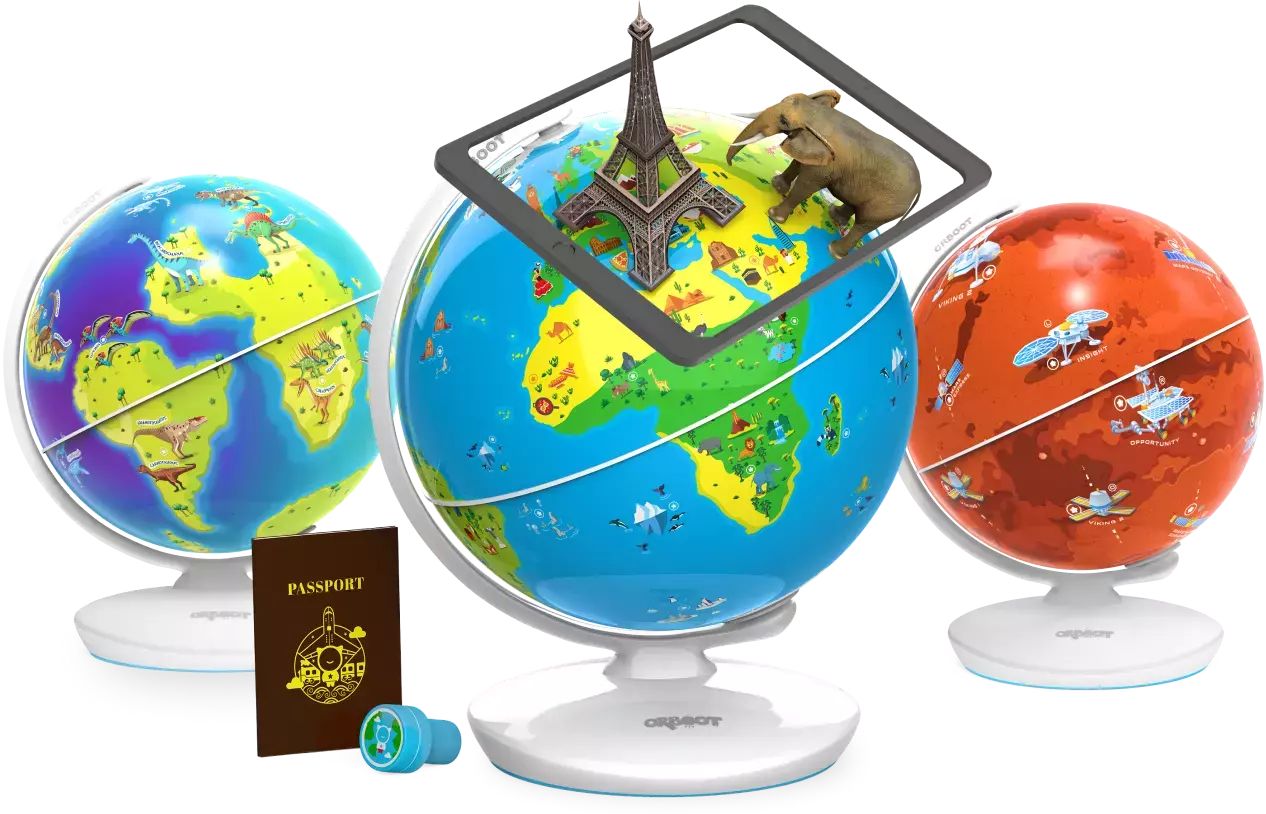The Origins of Augmented Reality
Augmented Reality (AR) is a technology that overlays digital information or virtual elements onto the real world, enhancing our perception and interaction with the environment. While it might seem like a recent innovation, the concept of AR dates back several decades.
The precursor to AR can be traced back to the 1960s when computer scientist Ivan Sutherland introduced the concept of the “Sword of Damocles.” This early form of AR involved a head-mounted display that projected simple wireframe graphics onto the user’s field of view. Although rudimentary by today’s standards, this groundbreaking invention laid the foundation for the future development of AR technology.
In the following decades, various researchers and scientists contributed to the evolution of AR. In the 1990s, Tom Caudell, a researcher at Boeing, coined the term “Augmented Reality” to describe the overlaying of digital information onto physical objects in a real-time environment. This marked a crucial milestone in the popularization of the concept and sparked widespread interest in the field.
During this time, AR was primarily confined to academic and research settings, with limited commercial applications. However, advancements in computing power and the miniaturization of hardware paved the way for broader adoption of AR technology.
In the early 2000s, the emergence of smartphones revolutionized the way we interact with digital content. Companies started exploring the integration of AR features into mobile devices, leading to the release of applications that allowed users to overlay virtual elements onto their surrounding environment.
One of the key turning points in the history of AR was the launch of Google Glass in 2013. This wearable device featured a head-mounted display and offered real-time information and interactive features, making augmented reality accessible to a wider audience. Despite its initial hype, Google Glass faced challenges in terms of privacy concerns and limited practical applications, leading to a temporary setback for the technology.
In recent years, advancements in hardware and software have propelled AR technology to new heights. Tech giants like Apple and Microsoft have entered the AR arena, introducing devices such as the Microsoft HoloLens and the Apple ARKit. These cutting-edge technologies have opened up a range of possibilities in industries like gaming, education, healthcare, architecture, and more.
The origins of augmented reality can be traced back to the visionary ideas of individuals like Ivan Sutherland and the contributions of countless researchers and innovators over the years. The journey of AR, from its humble beginnings to its present state, is a testament to the relentless pursuit of merging the digital and physical worlds. As technology continues to evolve, the future of augmented reality holds even greater promise for enhancing our daily lives in ways we can only imagine.
Early Concepts and Implementations
Although augmented reality (AR) has gained significant popularity in recent years, its development can be traced back to the early concepts and implementations that laid the groundwork for this groundbreaking technology.
In the late 1960s and early 1970s, researchers began exploring the idea of overlaying computer-generated graphics onto the real world. Influential figures like Ivan Sutherland and Myron Krueger pioneered early experiments in what would eventually become known as augmented reality.
Sutherland’s “Sword of Damocles” prototype, developed in 1968, was one of the earliest examples of AR technology. It involved a bulky head-mounted display that projected wireframe graphics onto the user’s field of view, providing a primitive form of augmented reality.
In the 1970s, Myron Krueger further advanced the concept of AR with his pioneering work in interactive art and immersive environments. His project “Videoplace” allowed users to interact with computer-generated objects in real-time, blurring the lines between the physical and virtual worlds.
Throughout the 1980s and 1990s, AR continued to evolve, primarily in research and academic settings. Researchers experimented with various technologies, including head-mounted displays, spatial tracking systems, and graphic overlays, to create more immersive augmented reality experiences.
One notable project during this period was the Virtual Fixtures system developed by Louis Rosenberg at the U.S. Air Force’s Armstrong Lab. This system used force-feedback devices to allow users to “feel” and interact with virtual objects, further enhancing the sense of presence and immersion in augmented reality environments.
In the early 2000s, with the commercialization of computing devices, AR began to make its way into consumer applications. One prominent example was the ARQuake project developed by researchers at the University of South Australia. It combined augmented reality with the popular video game Quake, allowing players to navigate virtual game environments overlaid onto the real world using a head-mounted display and handheld controller.
Another pioneering project was the ARToolkit, an open-source software library released in 2001. This library provided developers with tools to create their own augmented reality experiences, democratizing the technology and paving the way for further innovation in the field.
These early concepts and implementations were crucial in shaping the trajectory of augmented reality. They laid the foundation for the technologies and applications we see today, demonstrating the potential of AR to bridge the gap between the digital and physical realms. By pushing the boundaries of what was possible, these early pioneers paved the way for the widespread adoption of augmented reality in various industries and continue to inspire innovation in the field.
The Birth of AR Technology
The birth of augmented reality (AR) technology can be attributed to significant advancements in computer hardware and software, as well as the convergence of multiple disciplines. This revolution brought the concept of AR to life and set the stage for its rapid development and widespread adoption.
In the late 20th century, the advent of powerful computers and graphics processing units (GPUs) laid the foundation for the birth of AR technology. These advancements enabled the rendering of complex 3D graphics in real time, a crucial prerequisite for overlaying virtual elements onto the real world.
One key milestone in the birth of AR was the development of marker-based tracking systems. These systems used visual cues, known as markers, to provide a reference point for aligning virtual objects with the real world. With the emergence of such tracking systems in the late 1990s and early 2000s, AR experiences became more accurate and seamless.
At the same time, advances in computer vision and object recognition algorithms further propelled the growth of AR technology. These algorithms enabled devices to recognize and track physical objects in real time, facilitating the integration of virtual content into the user’s environment.
Another critical factor in the birth of AR was the convergence of multiple industries and disciplines. Researchers, engineers, and designers collaborated across fields such as computer science, human-computer interaction, optics, and material science to develop the technologies and devices that make AR possible.
Furthermore, the gaming industry played a significant role in bringing AR to the mainstream. In the early 2010s, the release of games like “Pokémon Go” introduced millions of people to the concept of AR, showcasing the potential for immersive and interactive experiences in the real world.
Consumer demand and market competition also played a vital role in driving the birth of AR technology. Tech giants like Apple, Google, and Microsoft recognized the potential of AR and invested heavily in research and development. Their efforts led to the creation of devices and platforms, such as smartphones and smart glasses, that could support AR experiences.
The birth of AR technology was not confined to a specific event or invention but rather the result of a continuous evolution and collaboration across various disciplines. It brought together advancements in computer hardware, software, computer vision, and object tracking, along with consumer demand and industry competition. Together, these factors propelled AR from a concept to a reality, opening up a world of possibilities in fields such as gaming, education, healthcare, and more.
The First AR Devices
The development of augmented reality (AR) technology paved the way for the creation of the first AR devices, which brought the immersive and interactive capabilities of AR directly to users. These early devices marked a significant leap forward in the accessibility and usability of AR experiences.
One of the earliest AR devices to gain recognition was the Head-Mounted Display (HMD). The HMD, worn like a pair of goggles, allowed users to view computer-generated graphics overlaid onto their real-world environment. The first commercially successful HMDs, such as the Virtual Boy by Nintendo, provided users with a glimpse into the world of augmented reality.
In 2013, Google introduced Google Glass, a set of smart glasses that incorporated AR features. Google Glass featured a small transparent display positioned above the user’s eye, allowing real-time information to be projected into their line of sight. Wearers could read messages, receive notifications, and even capture photos and videos, all while keeping their hands free.
Another notable AR device was Microsoft HoloLens, released in 2016. HoloLens is a self-contained headset that combines augmented reality with spatial mapping and tracking capabilities. This device allows users to experience interactive holograms projected onto their real-world surroundings, further blurring the lines between the physical and digital realms.
In recent years, smartphones have become ubiquitous AR devices. With the advent of advanced camera systems, powerful processors, and built-in sensors, smartphones have become a popular platform for AR experiences. Apple’s ARKit and Google’s ARCore are software development kits that enable developers to create augmented reality applications that leverage the capabilities of smartphones, such as motion tracking and environmental understanding.
Additionally, companies like Snapchat and Instagram have integrated AR into their mobile applications, allowing users to overlay virtual filters, effects, and animations onto their selfies and videos. These advancements have made AR more accessible to a wider audience, as smartphones have become essential tools in our daily lives.
While the first AR devices were groundbreaking at the time of their release, they also faced challenges. Issues such as limited battery life, bulkiness, and high costs hindered widespread adoption. However, as technology continues to advance, subsequent iterations of AR devices are becoming more compact, affordable, and user-friendly.
The development and availability of the first AR devices marked a significant milestone in the evolution of augmented reality. These devices allowed users to experience AR in a more personal and immersive manner, unlocking a new world of interactive and enriched experiences. With ongoing advancements, AR devices are poised to play an even more prominent role in our daily lives, transforming the way we work, learn, and interact with the world around us.
AR in Popular Culture
Augmented reality (AR) technology has not only made significant advancements but has also become a prominent fixture in popular culture. AR has made its way into various forms of entertainment, advertising, and even art, captivating audiences across the globe.
One area where AR has had a significant impact is the gaming industry. Games like “Pokémon Go” brought AR to the mainstream, allowing players to capture virtual creatures in their real-world surroundings. This groundbreaking game introduced millions of people to the concept of AR and showcased the potential for immersive and interactive gaming experiences.
In addition to gaming, AR has also been utilized in film and television. Directors and producers have incorporated AR effects into their projects to enhance storytelling and create visually stunning scenes. From overlaying virtual creatures and objects onto live-action shots to transforming mundane environments into fantastical landscapes, AR has revolutionized the way movies and TV shows are made and consumed.
AR technology has also found its way into advertising and marketing campaigns. Brands have leveraged AR to engage with consumers in unique and interactive ways. Through mobile applications, users can scan products or logos to unlock immersive AR experiences that showcase additional information, provide virtual try-on options, or even create entertaining branded content.
Artists and designers have also embraced AR as a medium for creative expression. Exhibitions and installations featuring AR elements have gained popularity, allowing visitors to experience immersive and interactive artworks. These AR-powered experiences provide a new level of engagement and audience participation, blurring the boundaries between the physical and digital realms.
Furthermore, AR has made its mark in education and training. Educational apps and platforms employing AR technology offer immersive learning experiences that enhance understanding and retention of complex subjects. From anatomy lessons that allow students to explore virtual human bodies to simulation-based training programs for professionals, AR is transforming the way we acquire knowledge and develop skills.
AR’s presence in popular culture has not only entertained and engaged audiences but has also sparked a renewed sense of wonder and imagination. It has inspired artists, creators, and innovators to push the boundaries of what is possible and continue to explore the possibilities of merging the real and virtual worlds.
As AR technology continues to evolve, we can expect its influence on popular culture to grow even further. From gaming and entertainment to advertising and art, augmented reality has become an integral part of our cultural landscape, shaping the way we interact, learn, and envision the future.
Advancements in AR Technology
Augmented reality (AR) technology has made significant advancements in recent years, transforming the way we perceive and interact with the world around us. These advancements have expanded the capabilities of AR, making it more immersive, interactive, and accessible.
One key advancement in AR technology is the improvement in hardware. AR devices have become more compact, lightweight, and comfortable to wear, enabling users to experience augmented reality for longer durations without discomfort. The miniaturization of components, such as sensors, processors, and displays, has also allowed for more seamless integration of AR technology into everyday devices like smartphones, glasses, and even contact lenses.
Another notable advancement is in the field of computer vision. Algorithms and machine learning techniques have greatly improved the ability of AR systems to understand and interpret the real-world environment. Real-time object recognition, camera tracking, and depth sensing technologies have made AR experiences more accurate and stable.
Advancements in natural user interfaces (NUI) have also played a crucial role in enhancing AR technology. Gesture recognition, voice commands, and eye tracking have enriched user interactions with AR content, making the experience more intuitive and immersive. These advancements have created more seamless and natural ways for users to interact with virtual objects and information in the real world.
Furthermore, the development of cloud-based AR solutions has expanded the possibilities of AR experiences. Cloud-based AR offloads processing and storage needs to remote servers, reducing the computational requirements of devices while delivering more sophisticated and data-intensive AR content. This has enabled richer and more complex AR applications, such as remote collaboration, interactive training simulations, and real-time data visualization.
Advancements in AR content creation tools and platforms have democratized the development and deployment of AR experiences. User-friendly software development kits (SDKs), such as Apple’s ARKit and Google’s ARCore, have made it easier for developers to create AR applications for various platforms. These tools have empowered developers to unleash their creativity, leading to a wide range of AR applications in areas like gaming, e-commerce, education, and more.
Lastly, partnerships and collaborations between hardware manufacturers, software developers, and content creators have accelerated the pace of AR technology advancements. Companies are joining forces to push the boundaries of what is possible with AR, exploring new technologies like holographic displays, smart glasses, and even brain-computer interfaces.
The advancements in AR technology have opened up a world of possibilities across various industries and applications. From entertainment and gaming to healthcare and engineering, augmented reality continues to evolve, providing new experiences and transforming how we communicate, learn, and interact with the world around us.
Current and Future Applications of AR
Augmented reality (AR) technology has seen a wide range of applications across various industries and continues to hold promise for even more innovative uses in the future. From entertainment and gaming to healthcare and education, AR is reshaping our experiences and transforming the way we interact with our surroundings.
In the entertainment and gaming industry, AR has already made a significant impact. Mobile games like “Pokémon Go” have introduced millions of people to the immersive world of AR gaming. AR-enhanced experiences allow players to interact with virtual objects and characters in their real-world environment, merging the digital and physical realms in exciting and interactive ways.
AR has proven invaluable in fields such as healthcare and medicine. Surgeons can use AR overlays during procedures, providing them with real-time guidance and information to improve accuracy and precision. It can also aid in medical training, allowing students to practice procedures on virtual patients or simulate complex medical scenarios.
In architecture and design, AR enables professionals to visualize and present their concepts in a more tangible and immersive manner. With AR, architects can overlay digital models onto physical spaces, allowing clients to experience and understand the proposed designs in a realistic way before construction even begins. This enhances communication and collaboration among stakeholders, leading to more informed decision-making.
AR has also found applications in education, creating interactive and engaging learning experiences. By overlaying digital content onto physical textbooks, worksheets, or 3D models, AR adds a new dimension to traditional learning, making subjects come alive and fostering student engagement and understanding.
Field service and maintenance are other areas where AR is proving to be a game-changer. Technicians can utilize AR overlays to access real-time information, step-by-step instructions, and troubleshooting guides while performing repairs or maintenance tasks. This improves efficiency, reduces human error, and simplifies complex procedures.
Retailers are taking advantage of AR to enhance the shopping experience. Virtual try-on features enable customers to virtually try on clothes, accessories, or even furniture, eliminating the need for physical fitting rooms or the hassle of returns. AR can also provide additional product information, reviews, or personalized recommendations, creating a more personalized and immersive shopping journey.
Looking to the future, AR holds even greater potential. Industries like tourism, sports, and advertising have only scratched the surface of what AR can offer. Imagine exploring historical sites with holographic tour guides, watching sports events with real-time player stats and replays overlaid on the field, or viewing AR advertisements that integrate seamlessly into our daily lives.
As hardware and software advancements continue, AR technology will become more accessible and integrated into everyday devices. Smart glasses, contact lenses, or even embedded AR displays may become more common, providing users with a continuous augmented experience. The convergence of AR with other emerging technologies such as artificial intelligence and 5G connectivity will unlock new possibilities and shape the future of AR applications.
From entertainment to healthcare, education to retail, the current and future applications of AR are vast and exciting. Augmented reality is revolutionizing various industries, enhancing our experiences, and providing unique solutions to real-world challenges. As technology continues to evolve, we can expect AR to become an increasingly integral part of our daily lives.
Conclusion
Augmented reality (AR) technology has come a long way since its inception, evolving from a concept to a reality that is shaping our lives in profound ways. The origins of AR can be traced back decades, with groundbreaking ideas and inventions paving the way for its development. From early concepts and implementations to the birth of AR technology and the emergence of the first AR devices, each milestone has contributed to the growth and adoption of this transformative technology.
AR has made its mark in popular culture, captivating audiences through immersive gaming experiences, enhancing entertainment and advertising campaigns, and pushing the boundaries of artistic expression. Advancements in hardware, computer vision, natural user interfaces, and cloud-based solutions have propelled AR to new heights, making it more accessible, interactive, and versatile.
Today, AR finds its applications across various industries: from healthcare and education to architecture, retail, and beyond. Surgeons can improve precision and accuracy in medical procedures, architects can present their designs in a more tangible manner, and students can benefit from interactive and engaging learning experiences. AR is transforming the way we work, learn, play, and connect with our environment.
Looking to the future, the potential of AR is immense. As technology continues to advance, we can anticipate even more innovative applications, seamless integration into everyday devices, and the convergence of AR with other emerging technologies. AR has the power to revolutionize industries like tourism, sports, and advertising, offering experiences that were once unimaginable.
As we embark on this journey of merging the real and digital worlds, it is important to recognize the collaborative efforts of researchers, developers, and visionaries who have pushed the boundaries of what is possible with AR. With their continued dedication and innovation, augmented reality will continue to evolve, becoming an integral part of our everyday lives.
The future of AR is bright, with endless possibilities awaiting exploration. We can expect to see AR reshape industries, enhance our experiences, and empower us to interact with our surroundings in new and meaningful ways. Augmented reality is transforming how we perceive and engage with the world, and the journey has only just begun.







